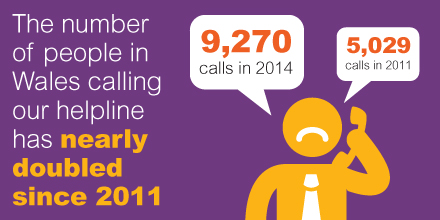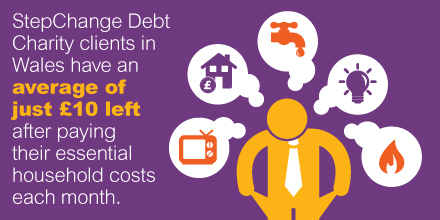Wales in the Red 2015: Council tax debt and water arrears rising
‘Wales in the Red’ is one of the charity’s annual national reports, which uses data collated from our clients to help us assess the scale and make-up of debt problems across Wales.
This year’s report covers a wide range of issues, from the position of household budgets and burden of debt repayments on income, to the proportion of Welsh clients falling behind on essential bills such as rent and mortgage repayments, and council tax arrears.
It also looks at the payday loan phenomenon of recent years, and whether its rapid growth will continue under new Financial Conduct Authority (FCA) regulation.
- Last year saw a 23% increase in the number of people contacting the charity's helpline from Wales. Over the past four years, the number of StepChange Debt Charity Clients in Wales has risen by 84%, from 5,029 in 2011 to 9,270 in 2014.

- There are noticeable differences in demand for the charity’s services in the 22 unitary authority areas of Wales. Those in the far north and south of the country are more likely to contact the charity for debt advice (based on demand per 10,000 people).
- The average debt level among clients in the country is £12,759, yet the average client has just £10 left at the end of each month after covering their essential household costs to be able to put towards their debts.

- Council tax debt and arrears on water bills are among the most rapidly growing debts for Welsh clients. The proportion of clients with council tax debt rose from 21.4% in 2011 to 30.4% in 2014; the proportion of clients with water arrears has almost doubled in that time.
- Last year, the average amount owed by clients with these types of debts reached a high of £762 on council tax debt and £714 in water arrears.
- There has been a significant increase in the number of people in rented accommodation contacting the charity. In 2014, 53% of clients in Wales were renters, up from 29.8% in 2011.
The report is based on the 27,115 people in Wales who contacted the charity’s telephone helpline between 2011 and 2014.
Download the report now to see our full research and recommendations.
Download now